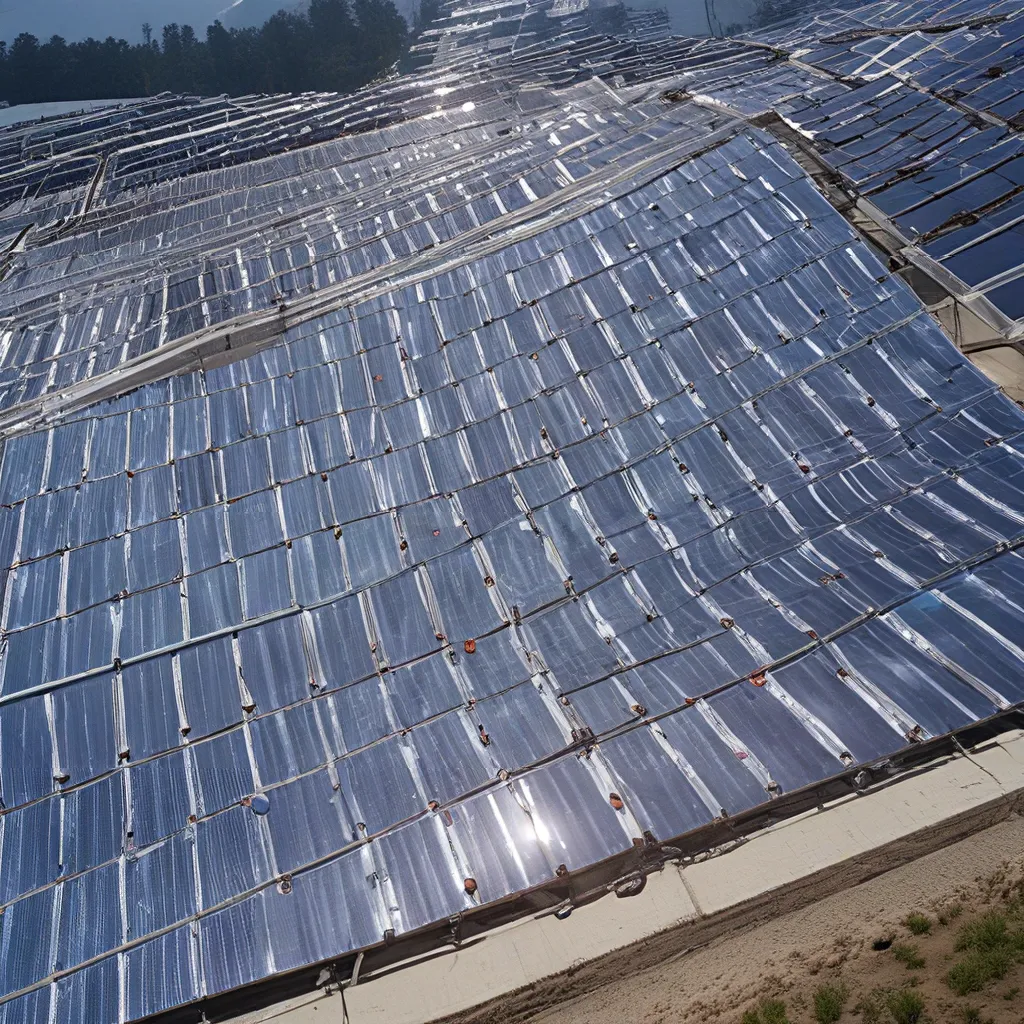
Harnessing the Power of the Sun
Imagine a world where the very walls of our homes and offices could generate clean, renewable energy with just a gentle nudge from the sun’s rays. A future where the cost of powering our lives is a mere fraction of what it is today. This is the promise of thin-film solar cell technology – a revolutionary advancement that’s poised to transform the way we harness the boundless energy of our closest star.
As an avid follower of clean energy innovations, I’ve been closely watching the rapid progress in this field. The journey has been nothing short of captivating, filled with scientific breakthroughs and technological leaps that are reshaping our energy landscape. Join me as I delve into the fascinating world of thin-film solar cells, uncovering the remarkable advancements that are paving the way for a brighter, more sustainable tomorrow.
The Rise of Thin-Film Solar Cells
Traditional silicon-based solar cells have long been the workhorse of the solar industry, but they’ve faced some persistent challenges. Their bulky, rigid construction and high manufacturing costs have limited their widespread adoption, especially in residential and commercial settings. Enter thin-film solar cells – a game-changing innovation that’s poised to overcome these roadblocks.
Cutting-edge research has shown that thin-film solar cells, with their lightweight and flexible design, can be produced at a fraction of the cost of their silicon counterparts. These cells use a mere fraction of the raw materials, allowing for more cost-effective manufacturing and installation. And the best part? They’re not limited to traditional rigid panels – thin-film solar technology can be seamlessly integrated into building materials, clothing, and even portable electronics.
Efficiency Meets Affordability
One of the key advantages of thin-film solar cells is their ability to strike a balance between efficiency and affordability. While early iterations of these cells lagged behind silicon in terms of energy conversion, the rapid advancements in materials science and engineering have significantly improved their performance.
Today, the latest thin-film solar cell designs can achieve conversion efficiencies of up to 22%, rivaling the best silicon-based options on the market. And the cost savings are equally impressive – thin-film solar cells can be produced for as little as $0.50 per watt, a fraction of the $3 to $4 per watt that’s typical for traditional solar panels.
This powerful combination of efficiency and affordability is a game-changer, making thin-film solar technology an increasingly attractive option for both residential and commercial applications. Imagine a future where every rooftop, every window, and even our very clothing could generate clean, renewable energy, all without breaking the bank.
Versatility and Innovation
But the true beauty of thin-film solar cells lies in their versatility. Unlike their rigid silicon counterparts, these lightweight and flexible marvels can be seamlessly integrated into a wide range of applications, from building-integrated photovoltaics (BIPV) to portable power solutions.
Imagine a world where the walls of your home or office double as energy-generating surfaces, silently converting sunlight into electricity to power your daily needs. Or envision a future where your backpack or jacket can charge your mobile devices on the go, thanks to the unobtrusive solar cells woven into the fabric.
This versatility is the result of tireless research and innovation, as scientists and engineers push the boundaries of what’s possible. From experimenting with novel materials like perovskites to developing innovative manufacturing techniques, the thin-film solar cell industry is constantly evolving, always striving to make clean energy more accessible and practical for everyone.
Sustainability and Environmental Impact
Beyond the financial and practical benefits, the rise of thin-film solar technology also holds profound implications for the environment. As we strive to wean ourselves off fossil fuels and embrace renewable energy sources, these lightweight, efficient, and cost-effective solar cells offer a promising path forward.
By making solar power more accessible and affordable, thin-film technology has the potential to accelerate the widespread adoption of renewable energy across the globe. Imagine a world where every rooftop, every building, and every transportation system is powered by the sun’s abundant energy, drastically reducing our carbon footprint and safeguarding the planet for future generations.
Plug & Save Energy Products is at the forefront of this sustainable revolution, offering a range of innovative thin-film solar solutions that cater to both residential and commercial needs. From solar-powered attic fans to integrated BIPV systems, we’re committed to empowering individuals and businesses to harness the power of the sun and unlock a brighter, more sustainable future.
The Future is Thin
As I reflect on the remarkable advancements in thin-film solar cell technology, I’m filled with a sense of excitement and optimism. The future is indeed bright, and it’s being powered by the very rays of the sun that have sustained life on our planet for billions of years.
From the sleek, flexible panels that can be seamlessly integrated into our built environment to the portable power solutions that keep us connected on the go, thin-film solar cells are paving the way for a cleaner, more energy-efficient world. And as the costs continue to plummet and the efficiency continues to soar, I have no doubt that these remarkable innovations will soon become a ubiquitous presence in our daily lives.
So, let’s embrace the rays of the future and embark on this journey towards a sustainable, solar-powered tomorrow. The time to harness the power of the sun is now, and with the advancements in thin-film solar cell technology, the possibilities are truly limitless.